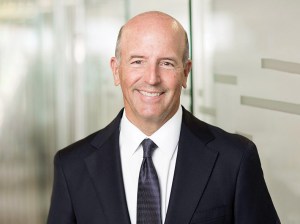How the Economic Recovery Is Shaping CRE’s Future
Midway through 2021, KBS' Chuck Schreiber and Colliers' David Amsterdam discuss the opportunities and challenges on the horizon.
As an overheating economy emerges from the pandemic, commercial real estate investors need to assess the best strategies for the placement of their capital, as well as the types of risk they are willing to assume. Chuck Schreiber, co-founder & CEO of private equity firm KBS, and David Amsterdam, president of U.S. Capital Markets and Northeast Region at Colliers, spoke to Commercial Property Executive about the challenges and opportunities the commercial real estate industry faces going forward.
Considering the vaccine rollout, how do you expect the economic recovery to unfold?
Schreiber: We have great confidence in the country’s increasing economic recovery over the next several months and beyond. The challenges the Johnson & Johnson vaccine is facing aside, there appears to be a high comfort level among Americans now that vaccines are widely available. In fact, a record-breaking 4.6 million doses were recently administered in one day in the U.S. and this sentiment is changing the culture of the business world.
For example, the volume of prospective tenants touring our available space has increased noticeably over the last two months. Whereas during the earlier part of the pandemic, we might see one or two company representatives visiting our buildings, within the last 90 days we have seen up to four people per company touring these properties—including heads of HR and CFOs.
Amsterdam: With about half of the adult U.S. population having received at least their first dose of the COVID-19 vaccine, reports of strong job growth in March and the passage of the American Rescue Plan, the economy is poised for a strong rebound.
Strong spending, rising GDP forecasts, increased business investment, industrial production, pre-tax corporate profits, low-interest rates, additional job growth and the presumed rise in household formation will ultimately drive improvement across real estate asset classes nationwide.
We are already seeing benefits from the vaccine rollout this year—activity is picking up in urban centers that have had even the most stringent restrictions, a return to office is just around the corner and people are back shopping, supporting local, regional and national retailers.
READ ALSO: Rising Sublease Rates Boost Office Vacancy
Which property types do you see as ripe for opportunity and which ones do you plan to avoid?
Schreiber: The hospitality sector has been one of the most adversely impacted by COVID-19. We do not anticipate entering into that sector because it doesn’t match with our current investment criteria.
As we emerge from the pandemic, we believe the office sector is increasingly positioned for strong performance. The national media is reporting that CEOs are highly confident that teams working from home are less productive than those who work in the office. Additionally, according to a recent Gensler survey, most people want to spend the majority of their normal work week at the office.
We place an emphasis on top-tier, Class A office assets with a diverse range of creditworthy tenants that are located in key business districts or prominent urban centers in top performing markets in the U.S. Within those markets, we seek the highest-quality assets that are close to public transportation and walkable amenities. These are regions where employees want to be and will likely continue to want to be after the pandemic.
Rental collection and leasing activity at our assets has continued to support this. In the last six months, rental collection at our properties is outperforming the overall office market, which is at roughly 95 percent as compared to our nearly 99 percent. We also successfully leased and renewed more than 2 million square feet throughout the pandemic. Beyond this, we anticipate that office properties will retain their valuations over the long term and have remained relatively stable throughout the pandemic, further demonstrating the continued demand for high quality office in core locations.

David Amsterdam, President of U.S. Capital Markets and Northeast Region, Colliers. Image courtesy of Colliers
Amsterdam: Investors are finding opportunities across the country. Industrial remains in high demand as e-commerce onshoring and increased domestic production have all been strong tailwinds. The recent Suez Canal disruption could add further demand in this sector as it became clear how easily distribution channels can be upended.
Multifamily cap rates continue to compress, as demand in this product type has been strong, particularly outside of city centers and we are seeing increased multifamily sales activity in secondary markets. Unlike major metros, secondary markets didn’t experience negative net migration, and in some places, even experienced growth in rents.
Investors are chasing growth and are continuing to drive cap rates lower. High-growth markets remain top choices for investors today. Life sciences, an industry heavily concentrated in a handful of markets, has been an area of growth and one which is still in the early innings. Numerous investors are allocating capital to this sector, driving investment sales volumes in markets such as Boston. Medical office, net leased retail, cold storage and data centers are also high on investors’ shopping lists.
How do you think remote work and the changing live-work relationship will impact the office industry this year?
Schreiber: We have been in discussion with our tenants and the majority of them with leases expiring in 2020 or 2021 have renewed for at least 12 to 18 months. Initially, employers were drawn to working from home because with lower overhead costs they could potentially lower their compensation package for employees, and it solved many parking issues.
Now that many office workers have been working from home for the last year, they are experiencing fear of missing out, and they are worried that they have become out of touch with their company. We are seeing many companies begin bringing their teams back to the office, while being sensitive to employees’ concerns about COVID-19. As companies announce that they are bringing their people back to the office, many companies appear to be following their lead, so we expect this trend to continue.
Amsterdam: This will be a year of discovery. Once occupiers bring their teams back to the office, they will be better positioned to plan for the future of office work in 2021, and beyond. There is no one clear-cut answer. Culture is incredibly important to companies and their success, and that is formed when people are together.
Training new employees is very difficult over video calls. Remote-work fatigue has set in for many workers who have seen a mental shift from “working from home” to “living at work.”
Survey results are conflicting, but generally speaking, employees would like more flexibility than they had before the pandemic. Whether this results in less occupied space is still to be determined.
READ ALSO: Global Investors Are Still Betting on the US, AFIRE Finds
Historically, foreign investors have focused on coastal U.S. markets and trophy assets. Are they starting to branch out to secondary markets and different types of assets?
Schreiber: This is a good question because it shows how the perspective of offshore investors has changed over the last 15 years. Investors from Asia in particular used to be focused on coastal communities along the Pacific Coast, as well as major markets like New York and Washington, D.C.
However, in recent years, roughly half of international investors of all sizes have recognized the benefits of investing in alternative prime markets around the U.S. such as Dallas, Houston and Austin, Texas; Atlanta; and Salt Lake City. These benefits include the potential for solid ROI, less competition and purchase prices considerably lower than many of the larger markets. KBS is constantly evaluating opportunities in these markets because they are positioned for long-term growth.
Amsterdam: Cross-border capital tends to focus on primary markets within the major asset classes and those markets are different across the asset classes, providing opportunities for foreign investment in numerous markets. In the early part of 2021, cross-border investors have been net sellers. This follows 2020, when they were net buyers, and 2019, when then too, they were net sellers. Institutional investors have been the largest net buyers since 2018, followed by foreign investors across all major asset types.
How do you see the performance of U.S. CRE so far? What are your expectations for the rest of the year?
Schreiber: We are optimistic about the next few quarters. The volume of new prospective tenants that have been touring our available space has risen significantly since the fourth quarter of 2020. These companies are considering the type of environment they are going to provide for their employees after the pandemic. They want to encourage their teams to return to the office by providing them with a top-quality work setting.
In the last three months, people have grown eager to get out of their homes and come back to the workplace, and we expect this enthusiasm to grow as vaccines become more widely available throughout the country. We are excited to see what will happen over the next 90 days and look forward to a strong future for the office sector.
Amsterdam: Office fundamentals have continued to soften with rising vacancies and negative net absorption in the first quarter. However, the pace of sublease space additions is easing, and rents continue to hold up. Large banks have expressed a desire to be back together in the office, offering support for demand.
There are also signs of recovery in tech markets with major occupiers seeking additional space. This will drive new activity in markets such as Silicon Valley, Calif.; Austin; Denver; Raleigh, N.C.; and New York City. One specific instance is Google, which has announced a $7 billion investment in its U.S. real estate portfolio and is calling its teams back to the office. Other tech companies are expected to follow suit.
Industrial demand remains strong, and with increased job growth, multifamily demand is supported. The ongoing easing of restrictions and increased spending will aid retail. Hotel occupancies are slowly improving, as people begin to travel again. The recovery will be uneven, with some property types and markets leading, while others will take longer to rebound. The economic recovery will continue to support commercial real estate demand.









You must be logged in to post a comment.